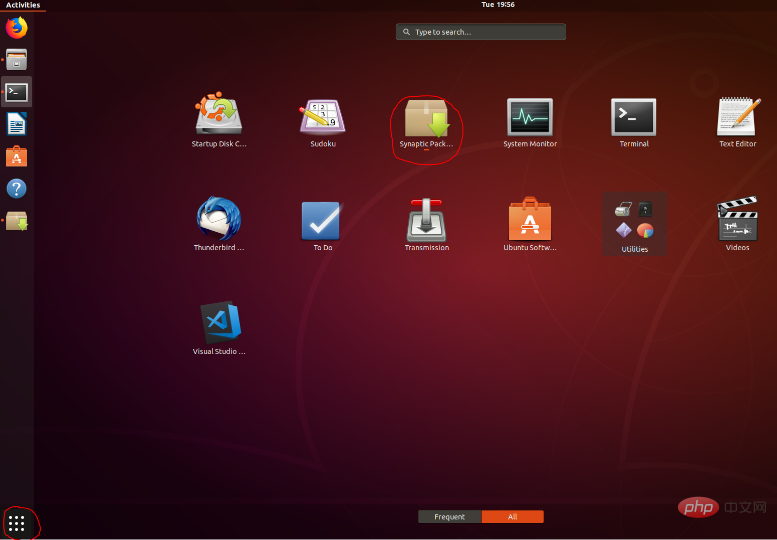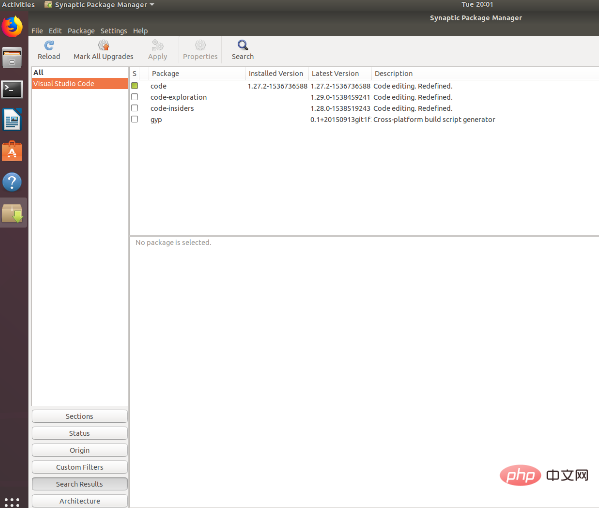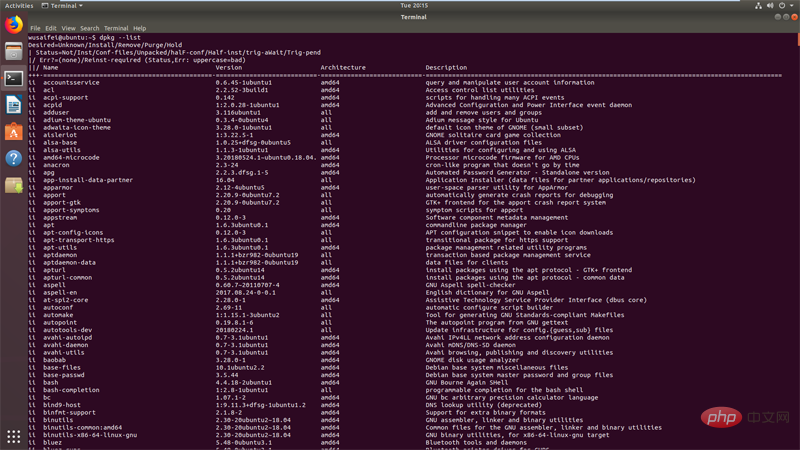How to uninstall software on ubuntu?
How to uninstall software on ubuntu? The following article will introduce you to several methods of uninstalling software on Ubuntu. I hope it will be helpful to you.

Method 1: Use Synaptic package manager to uninstall
1. Open the package manager.
Ubuntu comes with a GUI (Graphical User Interface, graphical user interface) package manager, which allows you to uninstall programs in a visual window. This tool is very useful if you are not comfortable using the command line.
● Click on System and then select Management. In the Administration menu, select Synaptic Package Manager.
● Some newer versions of Ubuntu do not have Synaptic pre-installed. To install it, open a terminal and type: sudo apt-get install synaptic
● If you are using Unity, you can open the dashboard and search for "Synaptic"


2. Find the program you want to uninstall.
In the left pane, you can sort the list of programs by category. Installed programs (packages) will be listed in the pane above Synaptic.
● Programs are often shown by their abbreviated names. For example, Media Player is often shown as "mplayer". If you can't determine by the program's abbreviated name whether it is the program you need to delete, please search for relevant information online to confirm before deleting it.

#3. Right-click the software package you need help with.
Select Mark for removal in the menu. You can choose to repeat this operation for multiple packages that need to be uninstalled.
● You can also choose to mark for complete removal so that configuration files and program files can be deleted.

Method 2: Use the Software Center to uninstall
Open the Software Center. Software Center is a GUI package manager that can install and uninstall Linux software.

Method 3: Use the terminal to uninstall
1. Open the terminal: Ctrl Alt T
2. Use the "apt-get" command, which is a common command for managing installed programs. You may be asked to enter your administrator password when uninstalling the program.
●When you enter your password, the password will not be displayed. After completing the input, press Enter.
● Browse installed programs. To view the list of installed packages, enter the following command. Note the name of the package you wish to uninstall. Enter the command: dpkg --list

● Uninstall the program and all configuration files. Enter the following command in the terminal, replacing the program you want to completely remove:
sudo apt-get --purge remove <programname>
For example:
sudo apt-get --purge remove 0ad-data-common
● Uninstall only the program . If you remove the program but keep the configuration file, please enter the following command:
sudo apt-get remove <programname>
Recommended related Linux video tutorials: "Linux Tutorial"
The above is the detailed content of How to uninstall software on ubuntu?. For more information, please follow other related articles on the PHP Chinese website!

Hot AI Tools

Undresser.AI Undress
AI-powered app for creating realistic nude photos

AI Clothes Remover
Online AI tool for removing clothes from photos.

Undress AI Tool
Undress images for free

Clothoff.io
AI clothes remover

Video Face Swap
Swap faces in any video effortlessly with our completely free AI face swap tool!

Hot Article

Hot Tools

Notepad++7.3.1
Easy-to-use and free code editor

SublimeText3 Chinese version
Chinese version, very easy to use

Zend Studio 13.0.1
Powerful PHP integrated development environment

Dreamweaver CS6
Visual web development tools

SublimeText3 Mac version
God-level code editing software (SublimeText3)

Hot Topics
 What computer configuration is required for vscode
Apr 15, 2025 pm 09:48 PM
What computer configuration is required for vscode
Apr 15, 2025 pm 09:48 PM
VS Code system requirements: Operating system: Windows 10 and above, macOS 10.12 and above, Linux distribution processor: minimum 1.6 GHz, recommended 2.0 GHz and above memory: minimum 512 MB, recommended 4 GB and above storage space: minimum 250 MB, recommended 1 GB and above other requirements: stable network connection, Xorg/Wayland (Linux)
 Linux Architecture: Unveiling the 5 Basic Components
Apr 20, 2025 am 12:04 AM
Linux Architecture: Unveiling the 5 Basic Components
Apr 20, 2025 am 12:04 AM
The five basic components of the Linux system are: 1. Kernel, 2. System library, 3. System utilities, 4. Graphical user interface, 5. Applications. The kernel manages hardware resources, the system library provides precompiled functions, system utilities are used for system management, the GUI provides visual interaction, and applications use these components to implement functions.
 vscode terminal usage tutorial
Apr 15, 2025 pm 10:09 PM
vscode terminal usage tutorial
Apr 15, 2025 pm 10:09 PM
vscode built-in terminal is a development tool that allows running commands and scripts within the editor to simplify the development process. How to use vscode terminal: Open the terminal with the shortcut key (Ctrl/Cmd). Enter a command or run the script. Use hotkeys (such as Ctrl L to clear the terminal). Change the working directory (such as the cd command). Advanced features include debug mode, automatic code snippet completion, and interactive command history.
 How to check the warehouse address of git
Apr 17, 2025 pm 01:54 PM
How to check the warehouse address of git
Apr 17, 2025 pm 01:54 PM
To view the Git repository address, perform the following steps: 1. Open the command line and navigate to the repository directory; 2. Run the "git remote -v" command; 3. View the repository name in the output and its corresponding address.
 Where to write code in vscode
Apr 15, 2025 pm 09:54 PM
Where to write code in vscode
Apr 15, 2025 pm 09:54 PM
Writing code in Visual Studio Code (VSCode) is simple and easy to use. Just install VSCode, create a project, select a language, create a file, write code, save and run it. The advantages of VSCode include cross-platform, free and open source, powerful features, rich extensions, and lightweight and fast.
 How to run java code in notepad
Apr 16, 2025 pm 07:39 PM
How to run java code in notepad
Apr 16, 2025 pm 07:39 PM
Although Notepad cannot run Java code directly, it can be achieved by using other tools: using the command line compiler (javac) to generate a bytecode file (filename.class). Use the Java interpreter (java) to interpret bytecode, execute the code, and output the result.
 What is the main purpose of Linux?
Apr 16, 2025 am 12:19 AM
What is the main purpose of Linux?
Apr 16, 2025 am 12:19 AM
The main uses of Linux include: 1. Server operating system, 2. Embedded system, 3. Desktop operating system, 4. Development and testing environment. Linux excels in these areas, providing stability, security and efficient development tools.
 How to run sublime after writing the code
Apr 16, 2025 am 08:51 AM
How to run sublime after writing the code
Apr 16, 2025 am 08:51 AM
There are six ways to run code in Sublime: through hotkeys, menus, build systems, command lines, set default build systems, and custom build commands, and run individual files/projects by right-clicking on projects/files. The build system availability depends on the installation of Sublime Text.







